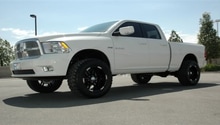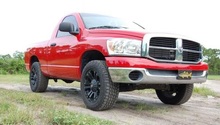Dodge Ram 2009-Present: Suspension Noise Diagnostic Guide
New and unknown noises can drive you insane. Find out here what are some of the most common culprits.
This article applies to the 4th Generation Dodge Ram (2009-Present).
As a truck owner, one of the most annoying things you can deal with is a new noise that shouldn't be there. Whether it is a squeak, squeal, clunk, or clicking noise, it can be maddening. Many people will opt to turn up the radio or create other noise to drown out the annoying one. This is, of course, not a good solution, but frustration makes us try just about anything. The most difficult aspect of dealing with this new annoyance is trying to figure out where it is coming from. Oftentimes, the noise will emanate from somewhere that it's not. A noise coming from the passenger wheel well may actually be coming from the driver's side engine compartment. This makes the task of tracking it down so difficult. Another annoying aspect is that the noise can start, stop, grow louder, or softer based upon the driver's action. Does it get louder as you speed up, slow down, turn in one direction or the other, go over a bump or a pothole? These factors can make it seem like a life long journey to get to the source and fix. Read on to learn about some of the most common sources of these noises in no particular order, which hopefully will help you solve your problem.

Materials Needed
- Grease
- Penetrating spray
- Tape
- Loctite
Step 1 – Check your leveling springs and spacers
They might need some good lube.
Many aftermarket leveling kits such as "Big Country" in conjunction with the OEM struts have noise issues. If your noise is coming from the front, check the piston arm as it may be rubbing against the mounting bracket. There's not a whole lot of options here other than to swap out the OEM struts with something like Bilstein's 5100 series leveling struts. If the noise is coming from the rear, add some grease such as Cheetah Grease to the area where the spring and the spacer come together.
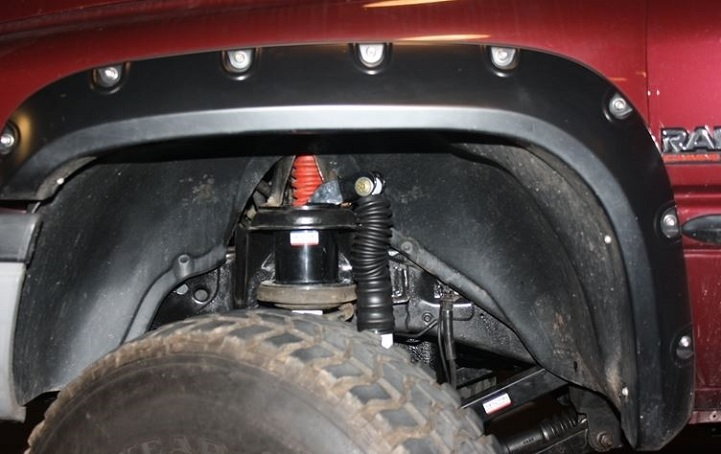
Pro Tip
WD-40 is a penetrating spray, not a grease. It will dry up and your noise will come back. White lithium grease is similar and it will last longer; however, it will eventually dry up and your noise will return. Many Ram owners are reporting great luck with the Cheetah Grease product lasting a very long time and not drying out.
If a generous lubing on the spacers and springs didn't help, check the strut tower.
Step 2 – Check the strut tower rod nut
It may be loose.
The strut rod nut may have been loose, or it may not have been properly torqued in the first place. Many need such a small torque, such as only five foot pounds per inch, that people just hand-tighten thinking they got it. This may not have done it. Get a torque wrench and make sure you hit the mark.

If that didn't solve your problem, check out this next very common issue.
Step 3 – Check the hood height adjustment
The hood bump stops might need adjustment.
The hood adjustable stops are plastic that can be adjusted in ride height up or down. A very common issue with the Ram truck is that these stops rub against the inside of the hood. You can adjust them up or down to get a better seal, and place some tape in the spot where they are rubbing. The really annoying part about this noise is that it sounds like it is coming from the wheel wells, so folks rarely think to look under the hood.
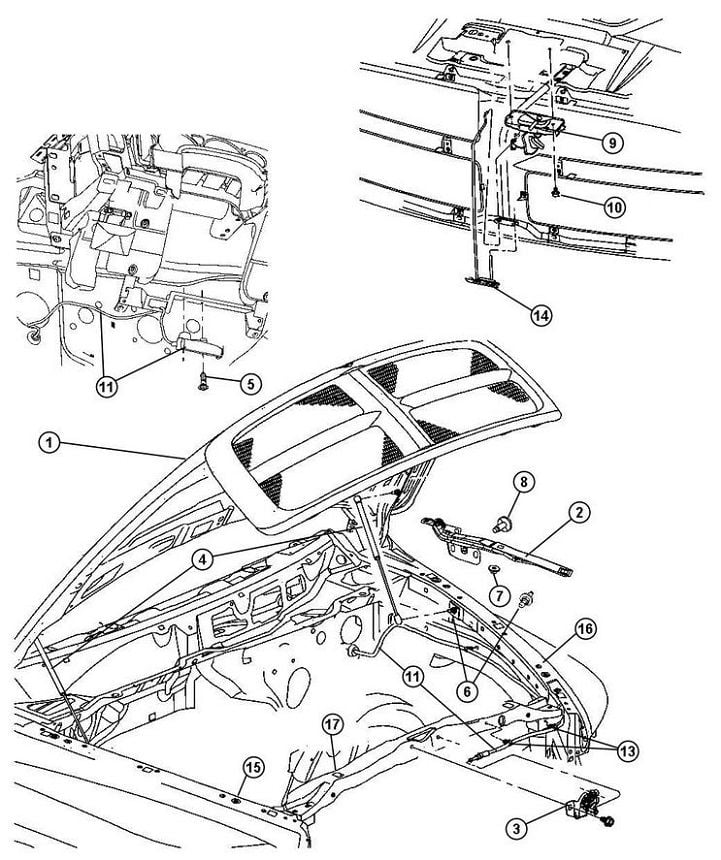
If the hood isn't your problem, another common issue has been with the Ram boxes.
Step 4 – Check the lid latch to your Ram boxes
They have been the subject of a huge amount of complaints of squeaks and bangs.
Grease the latches really well to the lid/latch mechanism on your Ram boxes if you have them installed. Particularly, on the driver's side. This was a very common problem with the Ram truck.

So you don't have Ram boxes installed? Do you have a passenger seat?
Step 5 – Grab the passenger seat from behind and jerk it
The seat latch on the rail isn't engaging properly.
This was the subject of a TSB (Technical Service Bulletin). The passenger seat latch doesn't engage all the way on the seat rail without some physical intervention. If you get behind the seat, grab it, jerk it hard to the rear and then to the front, you should hear a loud click. This tells you that the seat latched properly and you won't get that noise again, unless someone re-adjusts the seat with little to no force.
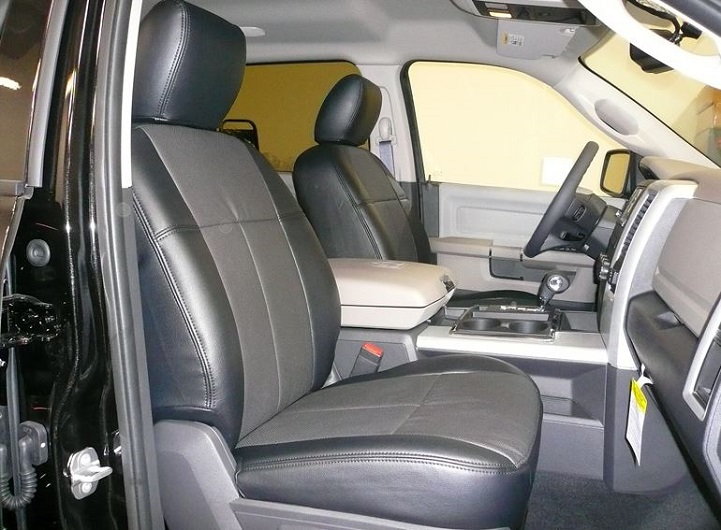
If your passenger seat was not the culprit, check your running boards.
Step 6 – Check your running boards
They might be loose.
Your running boards, if you have them, may be loose. Check all the bolt connections and tighten. It's a good idea to remove the bolts, add some Loctite to the threads and re-tighten them.
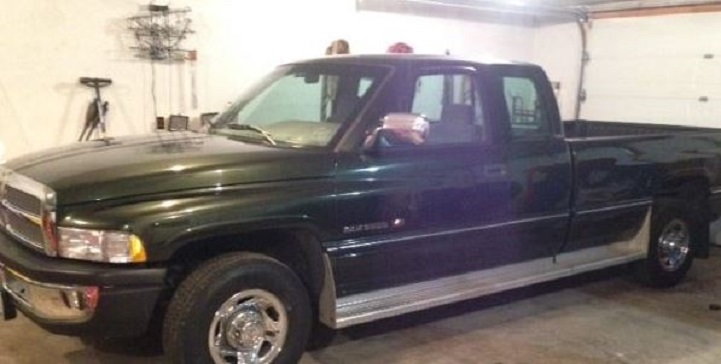
If your problem is a squeak rather than a clunk and nothing else seemed to work, continue reading.
Step 7 – Check your door frame
If you are getting whistling noise, it is likely the door frame at the A-pillar.
There was a TSB in 2011 for certain VINs that experienced a loud whistle at high speeds. The solution was to add a foam stuffing block into the door weatherstrip; painters tape instead seems to work as well.

If you are still hearing a noise, a very uncommon problem might be with your E-brake.
Step 8 – Check your emergency brake
The brake is covered with a protective rubber sleeve that might be rubbing.
The rubber sleeve may be rubbing against a bracket that is under the rear-cab door. Check the sleeve in this area, adjust it if needed and spray with a lubricant. This is a very uncommon issue, but it may also just be the thing.

If none of these solved your problem, it may be time to have a professional take a look.
Related Discussions
- Annoying Front End Squeak UGH - DodgeForum.com
- Front End Clunking Noise - DodgeForum.com
- What's Squeaking? - DodgeForum.com
- Highway Whistling Sound - DodgeForum.com
- Frame Making Popping Noise - DodgeForum.com
- Noise in Front When Turning, Anyone Have? - DodgeForum.com
- Strange Noise Taking Off or Stopping - DodgeForum.com





